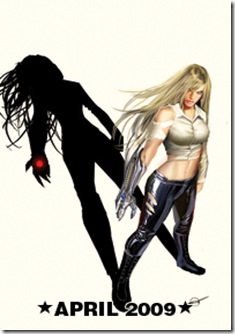Review: MY FAVORITE THING IS MONSTERS, amazing debut graphic novel
MY FAVORITE THING IS MONSTERS by Emil Ferris. (Fantagraphics Books, 2017) Black & white illustrations, with many pages in full color or partial color. Softcover, 8 3/4” x 11”. 386 pages. ISBN: 978-1-60699-959-2. $39.99.
There’s at least one skeptic in every family or among a group of friends: the person who thinks graphic novels are just thick comic books, of no particular importance, and intended for children to read. Of course they’ve never read a graphic novel, mainly because they think they have no literary merit.
I love to enlighten the skeptics, and will search my memories as well as my personal collection for graphic novels to recommend that compliment their particular interests and will hopefully change their minds. Add to that list of important graphic novels a new title just released in 2017, and the first work from a major new talent: MY FAVORITE THING IS MONSTERS.
This graphic novel has everything: a compelling and charming story, plus great art that works together with the words to convey a sad tale of growing up, loneliness, persecution, hardship and abuse. MY FAVORITE THING IS MONSTERS reads like an auto-biography of life in 1960’s Chicago told from the viewpoint of Karen Reyes, a precocious 10-year old girl of mixed race - - but it’s much more than that. It also serves as a study of the monsters that dwell within the human condition, both real and imagined.
Karen lives in a basement apartment with her mother and older brother, who helped develop her appreciation for art with frequent trips to the museum. Karen has a fascination with classic monster movies and pulp magazine horror. Her spiral bound, three-hole punched notebook (the format in which the book is presented) is filled with her own creations, sketches of imaginary horror magazine covers. She is shunned by most of her fellow students, has but a few friends, and imagines herself a werewolf girl — perhaps to help cope with her isolation and loneliness.
Karen chronicles everything in her notebook, filled with insights and observations of the peculiarities and obsessions of her family, as well as insights into the other colorful residents of her apartment building. Readers are treated to a look at 1960’s life from a younger viewpoint = politics, race riots, sex, free speech, Vietnam protests, and the assassinations of Kennedy and King.
Among the most interesting of Karen’s neighbors is Anka Silverberg, a survivor of the WWII holocaust who’s had a a troubled life of suffering from an abusive parent as well as time served as a child sex slave. When she is murdered, Karen works to solve the puzzle of Anka's life and identify the killer.
The art of Emil Ferris is spectacular and many of her images are worthy of extended study. Her style resembles the best work of Robert Crumb, but goes well beyond that in several panel sequences and montages. Many of the drawings are full-page and shimmer with amazing detail.
The novel ends satisfactorily with Karen drawing some conclusion about the meaning of life, but doesn’t completely answer all the questions that have been raised. Readers have more to look forward to in the upcoming Book Two.







Comments
Post a Comment